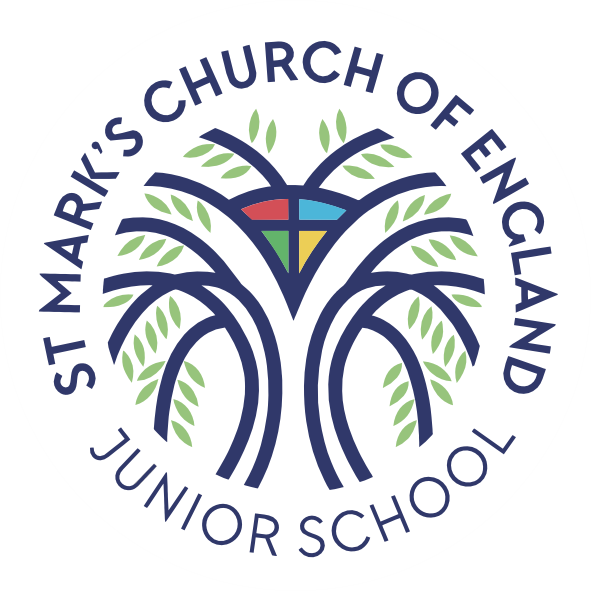Design and Technology
Introduction
Design and technology at St Mark's enables our pupils to combine practical skills with being creative and imaginative. Through our planned curriculum, we enable our pupils to create a range of outcomes covering: Electrical Systems, Cooking and Nutrition, Mechanical Systems, Digital World, Structures and Textiles. Each year group will cover each area and the carefully planned units build on prior knowledge and skills working with increased independence as they move up through the school. Each unit of work links with other areas of the curriculum.
Intent
The National Curriculum provides the basis of our curriculum at St Mark's. The curriculum is carefully planned to ensure progression across the year groups from Y3 to Y6 building on the prior learning from Benhall Infant School developing knowledge and skills.
As a school, we believe that our design and technology curriculum:
- enables our pupils to combine practical skills whilst being creative and imaginative. • enables our pupils to create a range of structures, products using - Mechanical Systems, Textiles, Electrical Systems, Structures, Digital World and Food products all with a real life purpose.
- enables our pupils to design and make high quality products that solve real and relevant problems within a variety of contexts that support other curriculum areas.
- opportunities for children to be creative and imaginative through design and technology, allowing children opportunities for creativity and innovation through designing and making;
- develop their capability to create high quality products through combining their designing and making skills with knowledge and understanding;
- recognising the value of evaluations and reflection on the outcomes of the pupils
- develop a sense of enjoyment and pride in their ability to make;
- nurture creativity and innovation through designing and making;
Implementation
Planning is provided through the progression document and the units of work which are based on the National Curriculum and supported through a combination of units based upon class curriculum units of work supported by Kapow . Children have the opportunities to:
- plan
- make
- evaluate their work when completing the units.
DT work is recorded in on planning sheets along side evaluations along and photographs. Most units of work are taught in a series of lessons and then time may be blocked for the final assignment. Each unit is usually planned over four sessions.
We ensure that all children can access learning by: explicit instruction, reducing cognitive overload, scaffolding, use of flexible groupings , using technology where appropriate examples include:
- Modelling the task
- Small group or 1:1 support where and when necessary (guided practice)
- Adapted teaching or tasks where necessary and use flexible groupings
Additional support for SEND or EAL children can be provided by:
- Pre-teaching vocabulary prior to beginning the topic
- Seating children alongside good role models to support one another and using as talk partners
- Providing visual or practical prompts, scaffolding prompts such as writing frames
- Providing adapted tools where necessary – with support from the SENCO
Impact
Assessment
At the end of each unit teachers will assess either knowledge or skills along with written work and photographs to make a summative best fit judgement. Work folders will record pupils designing, photographs and evaluations of outcomes.
Pupil voice
Children will be able to articulate their learning in art and design by:
- talking about the techniques they have learned and evidencing these in their work
- discussing their design work though written work and products created using subject vocabulary
- Explaining judgements made during the evaluation with explanations on how to further improve their product
Monitoring
The subject leader monitors the subject through:
- ensuring coverage of the units of work
- reviewing work and final outcomes
- a selection will be kept as evidence on Pobble with identification of skills taught and areas to develop in the following academic year
- pupil conferencing to ensure that pupils are able to articulate their learning
- lesson observations / learning walks/team teaching
- support to teachers in developing subject knowledge
- subject review by link Governor
Design Technology Curriculum Journey
What does "Mastery" in Design Technology look like?
What is Mastery?
A child’s ability to skilfully apply their learning in more in‐depth ways is called Mastery. Mastery is not just knowing a fact, but it is using that fact in increasingly more complex situations to extend their learning. Mastery also enables children to work in ways which show a deeper understanding of a given task.
What is Mastery in DT?
In the DT curriculum Mastery is when a child is able to plan, design and make an item to fulfil a given criteria. They would display a higher level of technical skill with a broad range of tools and think of innovative ways to use this knowledge to enhance the outcome of their item. When evaluating their work they are more analytical and work independently to assess and improve their project.
How would a child’s Mastery of DT present itself?
- Generating Ideas: Showing greater: complexity; research; observation; originality; perception; aspiration; creativity.
- Making: Showing greater: technique; skill; control; complexity; mastery; quality; judgement; creativity.
- Evaluating: Showing greater: judgement; autonomy; independence; perception; subtlety.
- Knowledge: Showing greater: breadth; contextual understanding; explanation; judgement.
Top Tips for Parents...
